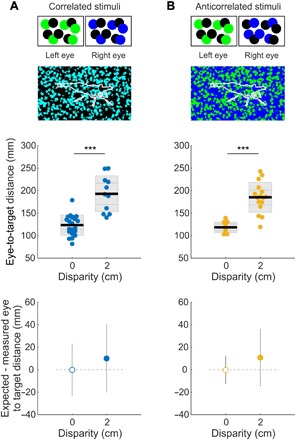Fig. 3. Cuttlefish perceive 3D locations correctly when stimuli are anticorrelated between the two eyes, but not uncorrelated.

(A) The stimulus contrast was correlated between the right and left eyes (e.g., at 0-cm disparity, left green + right blue = cyan stimulus). Using this principle, we generated stimuli where a shrimp silhouette was filled with a random pattern of dark and bright dots against a background of random dark and bright dots, i.e., the shrimp was indistinguishable from the background in any one monocular frame (shrimp outline was added here only for display purpose). Middle: Distance from the animal’s eyes to the screen at the beginning of the ballistic part of the strike for no disparity and for 2-cm disparity tests (middle: ***P < 0.0001, one-way ANOVA). Bottom: Distance of each group from the expected value (0 cm used as control; P = 0.730, bootstrap test; see movie S3). (B) Top: Test as in (A), but with the stimulus contrast anticorrelated between the left and right eyes. Middle: As in (A), ***P < 0.0001, one-way ANOVA. Bottom: P = 0.499, Bootstrap test. Black line: mean; inner gray box: SEM; outer gray box: SD. n = 6 and 3 for 0- and 2-cm correlated disparities, and n = 5 and 4 for 0- and 2-cm anticorrelated disparities.
